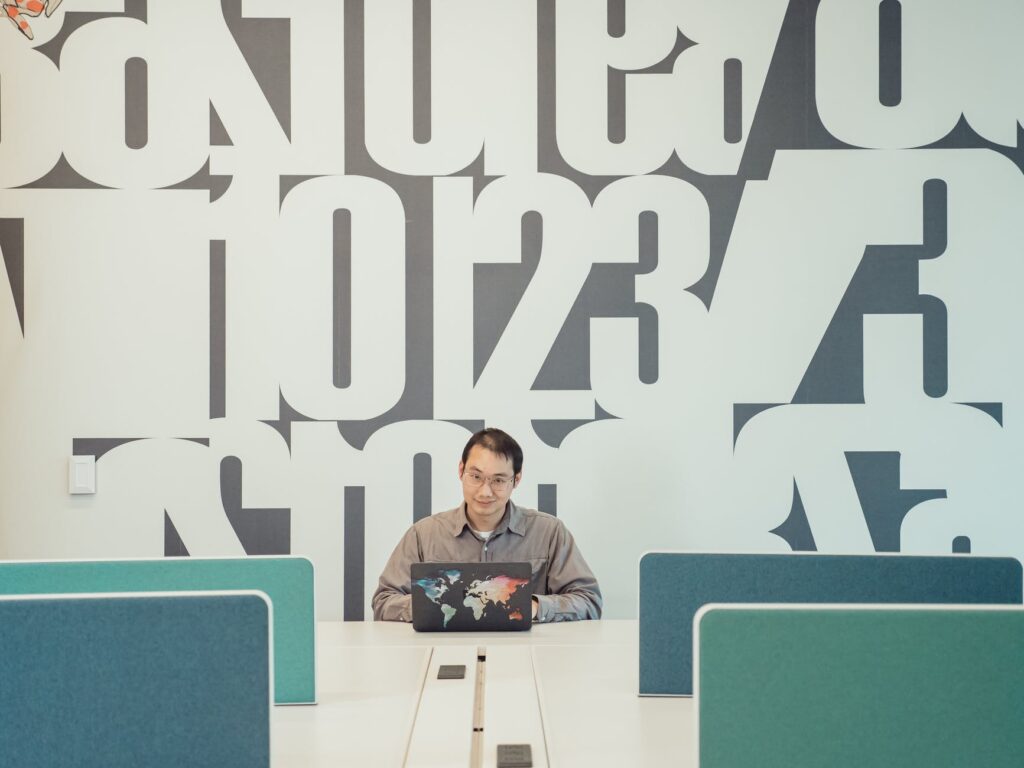Candidate ghosting is a recent and growing candidate phenomenon. It is a problem among hiring managers. In 2020, 28 percent of candidates ghosted employers, according to INDEED. This figure is up from only 18 percent in 2019.
Employers lose contact with prospective candidates with whom they’re communicating. It happens during the recruitment and selection process, and any stage of the hiring process.
And more hiring managers reveal that applicants, although accepted an offer, won’t show up on the first day at all. They ghosted employers to pursue a different path or join another company.
The common ghosting scenarios? There are several stunts that candidates pull and that show ghosting.
- Not showing up for a job interview
- Not replying to the hiring manager or recruiter
- Accepting a job offer verbally but not signing the papers
- Accepting a job offer but not showing up for the first day of work
Candidate ghosting happens for different reasons. Gen Zs have more choices on multiple job offers, recent graduates experience increased hiring, and low unemployment rates.
Not to forget, a negative #CandidateExperience, from the screening to the interview, and anywhere in the application process, could also be a factor.
It’s just an overview. In the following, I’m talking about the most common reasons for this candidate phenomenon.

Why they’re ghosting you?
4 in 5 employers have experienced ghosting from candidates who cut off communication or didn’t show up for an interview.
Somewhere along the way from the interview to the offer, there can be a lack of communication, guidance, and clarity. Candidates might not have been given the information they needed to feel that you’re the employer they’re looking for.
They might not have felt being updated or responded to when they needed it. In the interview process, address any of the most common candidate questions early on.
This article on the realistic job preview (RJP) might be able to help you. Convey the good and bad aspects of the job. Give candidates a good preview of your company culture and what the job involves. An RJP can help the prospective candidate think through if joining you will be a good decision.
Loooong interview/application process
Don’t assume that the applicant knows and understands your entire hiring process. For example, if your company takes a month to review the application of all the candidates, communicate it. This will prevent your candidates from guessing and feeling uneasy, which will result in ghosting to some of them.
Okay, the lengthy interview process – one of the reasons for the applicant ghosting. A lot of employers are missing the boat on this – the interview is a way to introduce the company to the prospective employee, and giving a bad #CandidateExperience can result in huge company problems.
This is especially true if your interview process is also disorganized. It can leave the impression that your organization is incompetent and indeed disorganized.
Some employers fail to recognize that top talents and even new ones can receive multiple job offers at once. They don’t have the time nor want to wait for the results of a long application process. In fact, on an average of 10 days, quality candidates are off the job market.
However, 46% of job seekers start losing interest in a particular company to focus on other companies. This happens more particularly if they haven’t heard from the organization within a week or two. They might even think that they’re not your choice, so they moved on and received an offer from another.
Fifty-seven percent of over 1,000 US workers revealed that waiting to see if they landed the job after an interview is the most frustrating part of the process, according to a recent survey.
And almost one quarter lose interest in a company after a week of going through the job interview, while 46 percent if don’t hear a status update within one or two weeks after the interview.
Wrap up the application process quickly. Otherwise, you’ll see the best candidates removing themselves from the recruitment, and this will hurt your company.
Prevent this from happening by communicating your hiring process. Remember, candidates aren’t intentionally ghosting but they do because they often misunderstand your recruitment process – especially its timeline.
The slow application process is one. Then, there is a lack of communication. They keep guessing and do not have an idea of when they’d hear from you. As a result, they search for jobs elsewhere. Keep the process short, smooth, and transparent.
Anybody there? Poor communication process
Imagine yourself being left in the dark. Nothing you could hear but silence. Hours and hours of guessing what could have gone or happened or if you’ve done well enough to impress the potential employer.
Lack or poor communication is another reason top candidates stop communicating with you. Employers fail to show up on time and prepared during the interview. Unfortunately, they expect candidates to come in early and prepared.
Not showing professionalism, like in terms of communication, candidates feel that hiring managers/employers don’t value and respect their time and effort. As a result, they become hesitant in moving forward with the application.
If you’re tired of losing your top candidates, be professional and stop ghosting them. Or else, poor experiences, part of it poor communication, can cost you much money. Don’t leave your candidates in the dark, but give them a good hiring experience. Keep the lines of communication open.
After all, there is no worse feeling in the world than to not get an update on the application status. Communicate with the candidates early and often.
You might want to use HR tools like HIRENEST to streamline the hiring process. It allows you to connect to applicants in different ways and offer you solutions that will help you make good hiring decisions. It also lets you contact candidates automatically without any hassle on your part.
Bad onboarding
What is your onboarding process? Perhaps, it’s time to look and consider what comes with it? Remember, an employee’s first impression of your company not only happens during the recruitment and selection process but also within the first month of working with you.
Is your onboarding program a continuous learning experience for employees? But besides onboarding, you, being the hiring manager, can also impact either the candidate leaving or loving your company.
From the get-go, show you care about prospective candidates. Be more personal and human. During the interview itself, show that you listen and support them. Answer questions. In short, make them feel welcome, and never leave them in the dark.
Accepting another company’s offer
Again, one of the factors here is your company’s long application process. More than that, lack of communication.
Communicating that your process is this long is another problem to solve. So, as top talents, in particular, receive multiple offers, they don’t have the time to wait that looong. Not only that. They’re likely to receive a better offer – with more benefits and rewards. They also receive offers from the company that first sent out an offer letter to them.
Or else, making them wait too long only increases your chance of losing that top talent. Make a final offer after the final interview – and as fast as you can.
“This isn’t for me”
Ghosting also happens when the prospective candidate decided that the job, or generally working for you, isn’t right for them. Many of them, instead of communicating this with the potential employer, choose the disappearing act.
To save the time of both you and the prospective candidate, develop a talent acquisition strategy that is built on good communication and transparency.
Gather your team. Talk to them about the needs of your business for every hire. Develop a hiring strategy around it and make sure to keep your candidates updated from the start so that they can manage their expectations.
Don’t forget to tell them about how your interview and application process is like – and the length of time it takes for you to review applications.
So from the beginning, you have to communicate expectations to avoid the guessing game and later ghosting. This strategy can also reduce turnover more often than not when employees do not meet their expectations.
It’s not all about the money – but purpose and meaning
Contrary to what a lot of employers perceive and believe, young professionals and millennials are looking for meaningful work, work with purpose.
More than half of the millennials would choose purpose at work than a $9K pay raise. Things like being challenged, being recognized, and having a work-life balance have become more important for them than ever. The bottom line of this is employee engagement.
They want to be doing meaningful work. They want work to be impactful and important. They want to be at their best selves.
You must think beyond compensation, rewards, and perks. Think beyond the monetary incentives and rewards of being a part of your team.
Don’t emphasize the salary – or they’d perceive that this is all you can offer, nothing more, nothing less. You can do better than this and show how your hiring process is different – and better.

“We’re not numbers in an applicant pool”
Humanize and personalize your recruitment process. You probably heard of these two and many could have applied it in their recruitment.
Applicants are humans, just like you. They’re not data. They’re not numbers. They have feelings and need personal interactions.
Candidates merely appreciate pre-recorded videos and impersonal interviews and believe that they’re not replacements for interviews with a human! Here’s a good Forbes article on the terrible truth about one-way interviews.
Yes, your company won’t meet every single candidate face-to-face, but you must take in-person interviews very seriously to engage potential employees of your company. Allow them to learn more about your company and its core values and culture. Allow them to ask questions and talk with the recruiters and potential teammates.
Make applicants feel at ease and welcomed. Show authentic interest in finding out their goals. It’s a great way of getting a better sense of what your company can offer to support and nurture these goals.
Personal and genuine interactions during the interview can also leave a good impression. Build a strong bond with the applicant from the start and learn about how the potential hires will fit into your company culture and work with your team seamlessly.
“What’s in it for me?”
The interview itself is a two-way conversation. It’s not only about you asking questions but answering questions, too. This conversation isn’t only focused on the goals, vision, and mission of your organization but also the candidates.
They want to see how will working for your company matches their career goals.
For example, did you know that Generation Z (Gen Z) values professional development and puts it on top of their priority before accepting a job offer? They prioritize development aside from and more than other things like prestige and salary.
Therefore, in the interview process, ask what you can do for them rather than just talk about what they can do for your company. Then, communicate how your company can help in their professional development and what tools you can provide them with so that they can grow as they work for you.
Show them potential growth and promotion within your company because they’re seeking career progress along with meaningful work. Incorporate their goals into the recruitment process.
As you’re looking to hire more Gen Z into your workforce, you must understand how to attract and retain them.
- They prioritize meaningful and enjoyable work.
- They place lesser importance on making a lot of money.
- They want to be the best at what they do.
- They want to make a difference!
- Almost 2/3 feels that it’s important to be a part of a company that shares their values and goals.
To stand out among, attract, and retain Gen Zs, show and offer upward mobility, professional development opportunities, and meaningful work to this generation. Show them how you can help them grow and develop professionally.
Not offering more benefits in an industry with high demand and less supply for talent
Are you in a high-demand industry, perhaps a fast-growing industry? Maybe talent supply is scarce and you need people to fill in vacancies.
Job candidates must be receiving multiple offers from different companies, and they won’t think for one more second to ghost you if they’d receive better offers from them. That’s why you need to stand out and show why you must be chosen.
The least you can do is offer a top salary package, but there should be more, like work-life balance, flexibility, additional bonuses, upward mobility, and professional development.
Interesting Read: What Is The STAR Interview? Quick Tips And Examples
Useful recruitment tools to prevent candidate ghosting
Today, you won’t run out of communication tools to help prevent ghosting. You can utilize them to understand your candidates better and find out their preferred communication methods.
Use communication tools that will position you in front of the applicants. These can keep them engaged with your company.
Examples are messaging used in the interview process. If your organization takes about two weeks to send out job offers, use an automated text or email to inform the candidate about this weekly. This will inform the applicants that they’re on top of your mind and that you’re not ghosting them.
Do you have a corporate landing page? You might want to direct your candidates here so that they’d know and be informed as much about your company. Do this from the interview to the offer stages.
As part of equipping them with as much information about your company, you can add a link to your social media accounts in your text/SMS.
Especially the younger generation, they don’t just head to your corporate website when reading about your company. They also check your Twitter, Facebook, LinkedIn, and GlassDoor accounts.
Do you have employee testimonial videos? Add a link to them when creating an SMS to send out to your future and prospective candidates.
You can also consider using a platform that will simplify the recruitment and selection process. Some solutions allow you to manage and coordinate all your candidates in one place. In this case, everyone in your team can discuss, make notes, and collaborate to smoothen the entire hiring process and create a positive candidate experience.

Over to You
In a competitive job market, what makes you a different employer? Are you respectful of your candidate’s time and thoughtful about how they’re feeling?
Your hiring process can make the big difference in attracting and keeping top talents engaged from the interview to the offer.
Got a long application process? Be sure to let the candidates know about it. Be honest and straightforward. Set expectations from the get-go.
Experiencing downtimes along the way? Communicate this through SMS, email, or your candidates’ preferred communication method.
Be respectful of your candidates’ time. Show up prepared for interviews, communicate whatever it is that they need to know, and try to be in their place. For sure, you don’t want to be left in the dark. And ultimately, you don’t have forever to wait for an update that isn’t coming.
At the end of the day, preventing ghosting is all about enhancing your #CandidateExperience strategies and what better way to do that than with timely communication, transparency, and a simplified hiring process. It’s time to review your recruitment strategy and develop a better one. What do you think?
